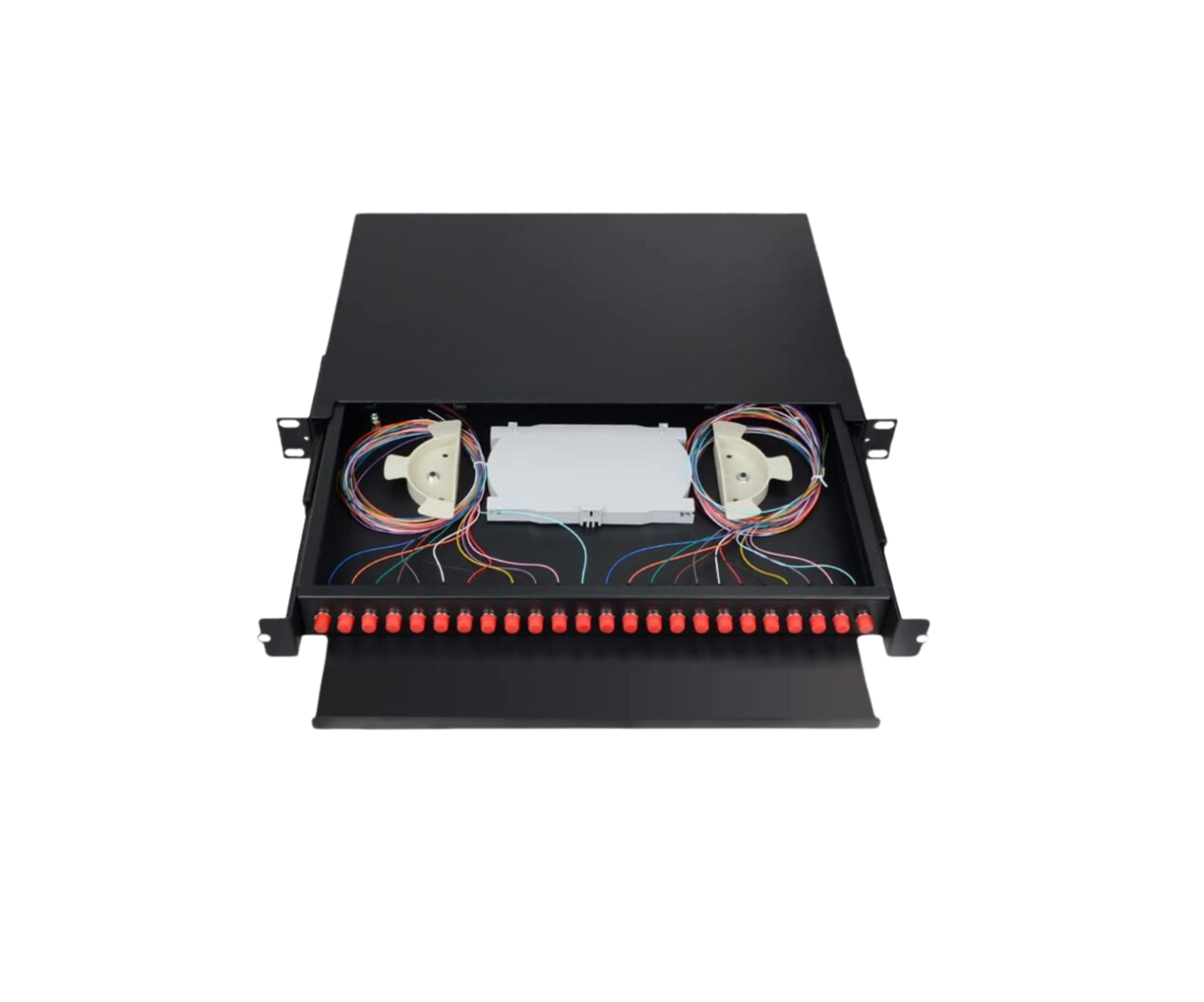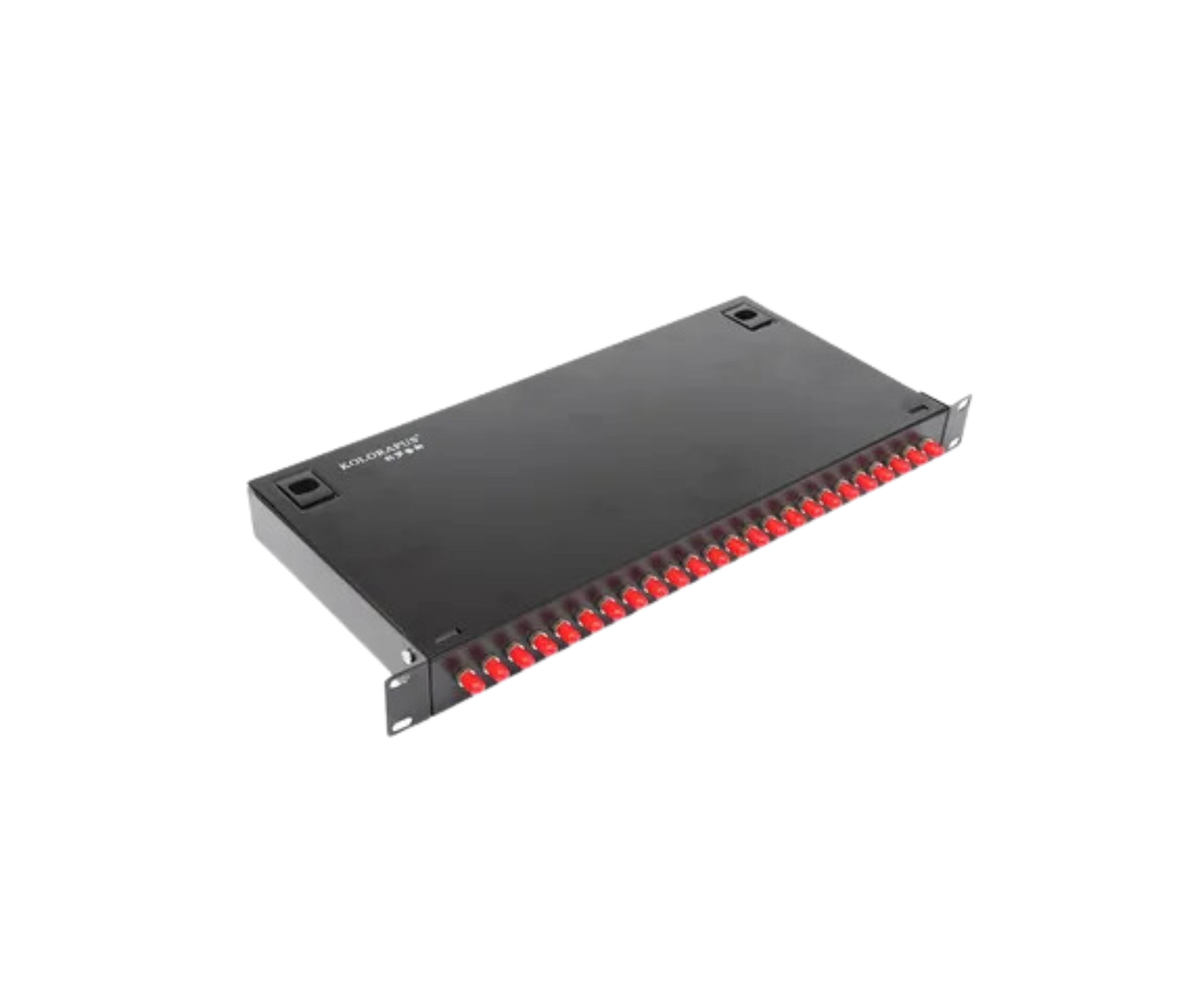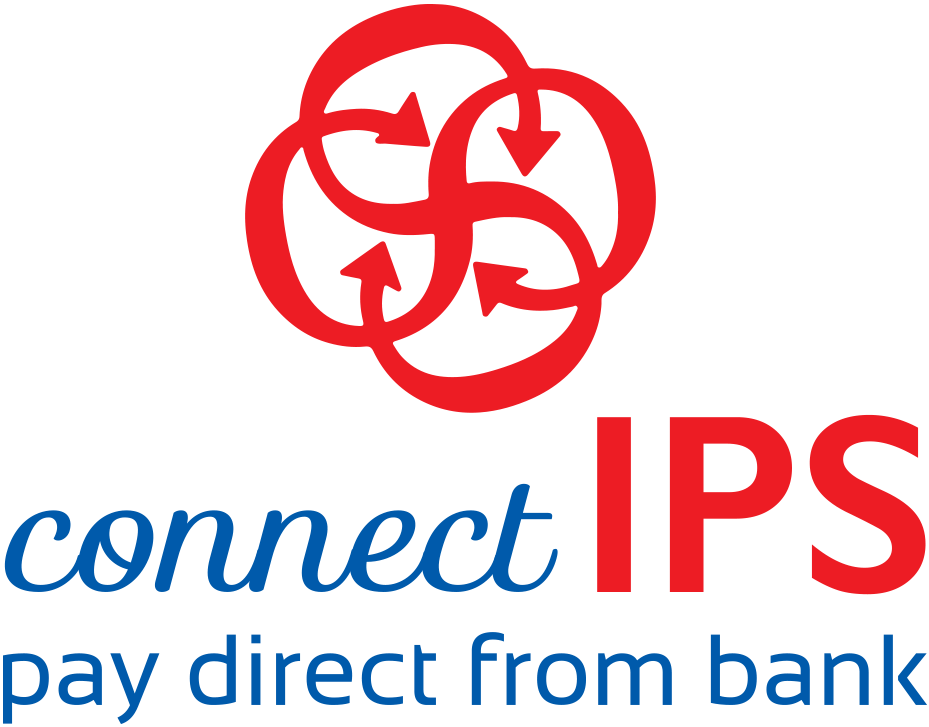Different types of Indoor ODF
Optical Distribution Frame (ODF):
An optical distribution frame (ODF) is a frame used to provide cable interconnections between communication facilities, which can integrate fiber splicing, fiber termination, fiber optic adapters & connectors and cable connections together in a single unit. Serves as a termination point for optical fibers, providing a platform for managing and organizing fibers.
Functions:
§ Simplifies
fiber connections and maintenance.
§ Provides
protection to optical fibers against physical damage.
§ Enables
easy cross-connections and testing.

When
discussing ODFs, it’s important to address both connector types
and fiber termination styles (such as APC
and UPC), which play a role in managing fiber-optic signals and maintaining connection integrity.
Types
of Connectors in ODF
1.
SC Connector
(Subscriber Connector)
2.
LC Connector
(Lucent Connector)
3.
FC Connector
(Ferrule Connector)
4.
ST Connector
(Straight Tip Connector)
Each
of these connectors has specific characteristics, and they support various core
capacities, including 12-core, 24-core,
and 48-core configurations. Additionally, connectors can have different polish
types for the fiber, such as UPC (Ultra Physical Contact)
and APC (Angled Physical Contact).
Let’s
dive into the details of each connector type, its core
configurations, and the differences
between APC and UPC polishing methods.
1. SC Connector (Subscriber Connector)
Design and Structure:
§
The
SC connector is one of the most common fiber optic
connectors and has a square shape. It uses a push-pull
mechanism, making it easy to connect and disconnect.
§
SC
connectors are available in both single-mode and multimode
fiber options.
§
They
use a 2.5mm ceramic ferrule, which houses the optical fiber.

Patch Panel ODF 24 Core SC APC
Core
Capacities:
§
12-core
SC connectors:
Typically configured for moderate-density applications. These connectors are
arranged in single-row or two-row designs.
§
24-core
SC connectors:
Used when a higher fiber count is required but still offers relatively compact
size and easy management.
§
48-core
SC connectors:
Found in high-density patch panels and distribution
frames in larger-scale installations such as data centers
or telecom networks.
Polish Types:
§
UPC
(Ultra Physical Contact): A flat-polished
connector with a very smooth finish, providing minimal insertion loss and is
typically used in single-mode applications.
§
APC
(Angled Physical Contact): A connector with a 8-degree
angle polish on the fiber end face, which reduces back reflection and
is typically used in high-performance single-mode systems.
2. LC Connector (Lucent Connector)
Design and Structure:
§
The
LC connector is a small form factor (SFF)
connector, about half the size of the SC connector. It uses a 2.5mm
ceramic ferrule and features a push-pull coupling mechanism.
§
LC
connectors
are highly preferred in high-density installations due to their smaller size.

Patch Panel ODF 24 Core LC UPC
Core Capacities:
§
12-core
LC connectors:
Typically used in moderate-density applications with 12
fibers arranged in a single row.
§
24-core
LC connectors:
Widely used in telecom and data centers where
higher fiber count and space efficiency are important.
§
48-core
LC connectors:
Found in high-density systems, particularly in large
data centers or telecom backbone installations, where
space utilization and fiber capacity are crucial.
Polish Types:
§
UPC: A flat-polished
LC connector used in single-mode fiber optic systems to
minimize signal loss.
§
APC: The angled-polish
LC connector helps to prevent back reflections, especially important in high-performance
single-mode systems.
3. FC Connector (Ferrule Connector)
Design and Structure:
§
The
FC connector uses a screw-on coupling mechanism
that ensures a secure connection.
§
It
is commonly used in single-mode applications for precise and
stable connections.
§
Like
the SC and LC connectors, the FC connector also uses a 2.5mm ceramic
ferrule.

Patch Panel ODF 24 core FC UPC
Core Capacities:
§
12-core
FC connectors:
These are less common but are still used for high-precision
fiber-optic applications where secure and stable connections are necessary.
§
24-core
FC connectors:
These are utilized when more fibers are needed while still maintaining
precision in the network.
§
48-core
FC connectors:
These connectors are typically used in high-density patch panels
and are part of modular systems designed for large networks.
Polish Types:
§
UPC: Standard flat-polished
FC connectors are used for minimal insertion loss in single-mode
applications.
§
APC: The angled-polish
FC connector is preferred for single-mode systems where low
back reflection is crucial, especially for high-performance
telecom networks.
4. ST Connector (Straight Tip Connector)
Design and Structure:
§
The
ST connector uses a bayonet-style coupling mechanism,
which is twist-lock to secure the fiber.
§
It
is an older connector type that is often used in multimode
fiber applications.
§
The
ST connector uses a 2.5mm ceramic ferrule,
similar to SC, LC, and FC connectors.

Core Capacities:
§
12-core
ST connectors:
These are typically used in legacy systems where multimode
fibers are deployed, and the number of fibers is moderate.
§
24-core
ST connectors:
Common in larger systems that require more fibers
for interconnections.
§
48-core
ST connectors:
While rare for individual fiber connections, these connectors are found in high-density
patch panels in legacy systems.
Polish Types:
§
UPC: Typically used
for multimode fibers in ST connectors to reduce insertion loss
and maintain quality signal transmission.
§
APC: Not commonly
used with ST connectors, as APC is generally reserved for single-mode
systems to prevent back reflections.
Polish Types: UPC vs. APC
The
polishing type of a connector plays a critical role in determining
the performance of the
fiber optic system, especially in terms of signal quality
and back reflection.
1. UPC (Ultra Physical Contact):
§ Flat polishing
technique that creates a very smooth contact surface for the fiber core.
§ Used for single-mode applications where low insertion loss is important.
§ Insertion loss is
typically lower than non-polished connectors.
§ Back reflection
is higher than APC but still provides good performance for most systems.
§ Common in SC, LC, and FC connectors for single-mode fiber.
2. APC (Angled Physical Contact):
§ The fiber ends are polished at a slight 8-degree angle,
which reduces back reflection.
§
Our Partners







Secure Payment By

